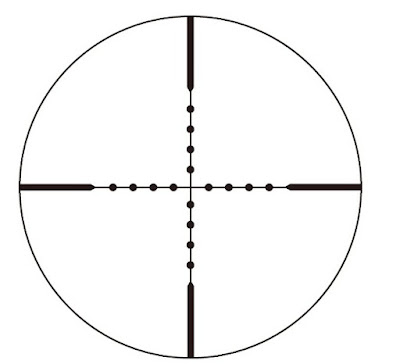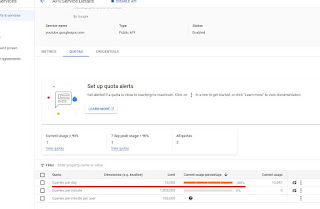I zipped through Becky Chamber's A Psalm for the Wild Built and was eager to read the second book in the series: A Prayer for the Crown-Shy. A Prayer turned out to also be a quick and enjoyable read. Like A Psalm I found myself arguing, sometime aloud, with the text. But for me, that's very much the joy of this series.
Below are some of these ideas. I'd consider them spoilers, so if you haven't read A Prayer for the Crown-Shy, do so now.
***Spoilers Below***
A Psalm for the Wild Built was marked by four notable features: the normalization of gender-free characters, the lack of physical conflict, a detailed description of features that power the Woke Utopia the characters inhabit, and the declaration of an unexpected organic trait by the robot population. To quickly recap, in A Psalm, the main character is sibling Dex. Not brother Dex or sister Dex. The fact that sibling has no gender is taken as a given, and plays no obvious role in the plot. Other than a few fleeting moments in A Psalm, the characters are never in any real danger. They appear to live in a crime and corruption free society. The main conflicts of the story are emotional, not physical. In A Psalm, we learn how society has finally come in to balance with nature: single use materials (like 'oil plastic'), are considered an anathema. Finally Mosscap explains, unintuitively, that the robots of the planet opt to die. They do this to emulate the organic life around them.
Does A Prayer for the Crown-Shy deliver on all four of these fronts? Yes, yes it does.
First, on the topic of gender, the text makes use of the title Mx. Because I listened to the text instead of reading it, it took a few moments to register what was going no. Mx. is pronounced 'mix', and I thought at first this might be a character's first name. Then I realized that Sibling Dex and Mosscap were talking with a stranger, and as such it would be respectful to refer to them as 'Mr.' or 'Ms.' Mx. is apparently the title to use when you don't want to specify a gender.
The use of Mx. in the text is perfect: it normalizes non-gendered interactions, yet does so in a casual non-plot impacting way. It's both an inconsequential choice (Chambers could have opted for a 'Mr.', 'Mrs.', or 'Ms.' title) and a deeply consequential one (Chamber is offering an education for folks like myself, and that's appreciated).
Next, there's the question of whether the characters are in any real danger. The short answer is, no. There's a moment involving the coastal town they visit where Sibling Dex confesses to Mosscap that the community they are approaching won't be fond of their presence. For a second, I thought Chambers might veer off course from A Psalm and put Dex and Mosscap in danger. I could imagine the scene: townsfolk descend on Dex and Mosscap armed with pitchforks and torches. Alas, it doesn't happen. The conflict with this community is purely an emotional one. The premise is that they don't like technology, and so they won't like Mosscap. As Mosscap explains, and I'm paraphrasing here, to not be liked does not feel good.
I think I see where Chambers was going with this. I can guess what it must be like to grow up in a community that rejects you. That kind of environment would be a source of significant trauma.
But, to tour the country and arrive in one town out of many where you aren't adored, and somehow feel sad, seems excessively fragile. I'm not buying it. Put another way, when I drive into southern Virginia, my self worth doesn't dip because I see Trump and Let's Go Brandon signs everywhere.
Also, I'm not convinced that the anti-technologists of the coastal town would even have a problem with Mosscap. From what we learn of them, they bristle at the way technology can lead humans down a flawed path. But Mosscap isn't human. If anything, I think they'd want to see for themselves how Dex interacts with Mosscap. Does Dex treat Mosscap like a piece of technology to be harnessed for the betterment of his life; or does he treat Mosscap as a sentient entity. They would find the latter, which I think would fit with their world view.
Next, I expected Chambers to school me on the Woke Utopia that Sibling and his fellow citizens live in and I was not disappointed. In this book we learned about 'pebs.' Pebs are a facility for tracking how much you've contributed to society. Exchanging pebs seem like a transaction: Bob gives Sally 1 peb, and Sally gives Bob a loaf of bread. But, its purely informational. Bob can always get the bread from Sally. The use of pebs just provides a public metric to let society know the current status of contribution vs. consumption.
This is a fascinating idea and is rooted in the idea that people fundamentally want to contribute. Sure, Bob could game the system by collecting up loaves of bread and sitting around playing video games all day. But if he did that, he would be showing he has a root issue he needs help with. Maybe he doesn't know how to contribute (Bob, open up a video game parlor - duh!), or maybe he's unwell (Bob recently lost his cat, and needs emotional support). What seems out of the possibility is that Bob is a moocher. They don't have moochers in Sibling Dex's world, apparently.
Pebs are interesting, but what I found especially powerful was Sibling Dex's response when Mosscap suggested, 'oh, so pebs are like money.' Dex responds the same way you or I might if you mentioned to a visitor that you have a housekeeper come on Wednesdays and they responded, 'oh, so you have slave.' You'd quickly explain that while a housekeeper and a slave may have some very shallow similarities, the analogy doesn't work. Slavery is irredeemably evil. And so it goes with money as it relates to pebs. Money is a big no-no.
Finally, there's the question of what unexpected declaration Mosscap will make about his robot clan. Here too, Chambers delivers. Mosscap explains that the robots have observed that all life eventually goes extinct. Therefore, robots take no special measures to fight off their own extinction. Eventually their parts will all fail, and robots will fade from existence, like dinosaurs or the passenger pigeon.
So robots opt to die and to let themselves go extinct. I appreciate that Chambers is looking for some controversial, yet fundamental truths about life here. And while the robots have a point, I think they've misread what nature is trying to teach them. More core than these two principles are that (a) every being clings to life, and (b) every being evolves.
Yes, every plant and animal will die. But before that, every plant and animal will fight to exist and to allow future generations to exist. And just as fundamentally, every plant and animal will adapt to the settings it finds itself in. One clever example of these principles is found in the text itself, where Dex notes the presence of trees wedged into the cliffs above the sea. These trees no doubt call for a generous amount of soil to exist and would normally thrive in a forest. But, life finds a way. Over time, the trees of the area became adapted to surviving in cracks between rocks. That's life. Yes, these trees will all die, and their species may ultimately go extinct. But the far more interesting story is what happens on the way to this.
By this logic, it's far more 'life like' to have Mosscap augment his body with organic material, then it is for him to opt to 'die' because a part failed.
A Prayer for the Crown-Shy checks the same boxes A Psalm for the Wild Built does. So yes, the storyline does have more than a little predictability to it. And yet, I still found the book to be an enjoyable read. The dialog I find myself having with characters is precious in its own right. I hope Chambers mixes things up in the future. But the topics she's playing with in these initial two books are thought provoking and I'm eager to join in on the debate.














